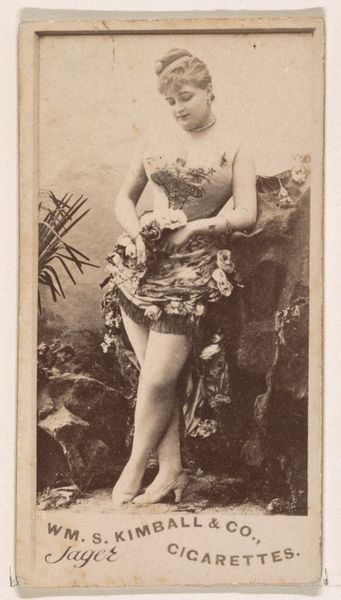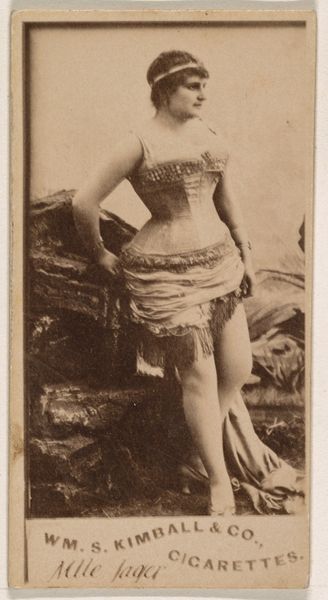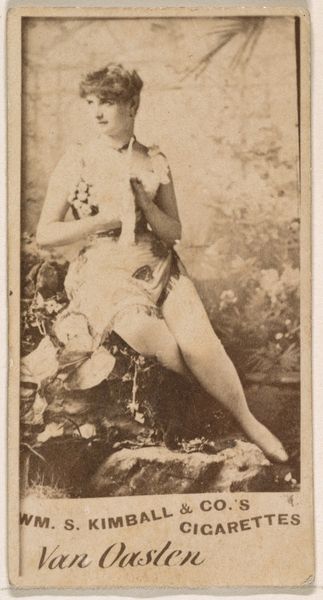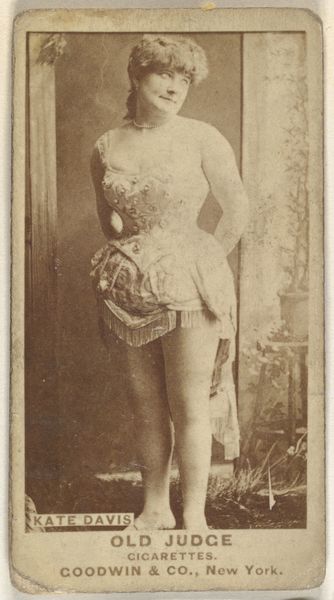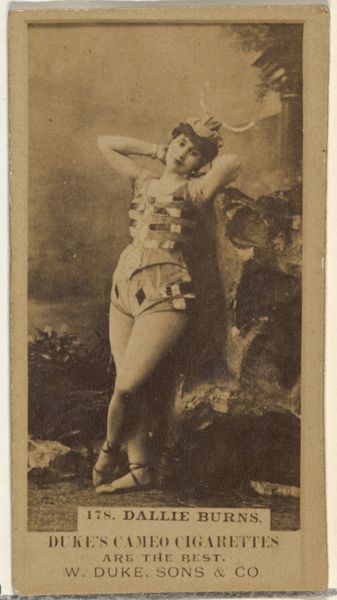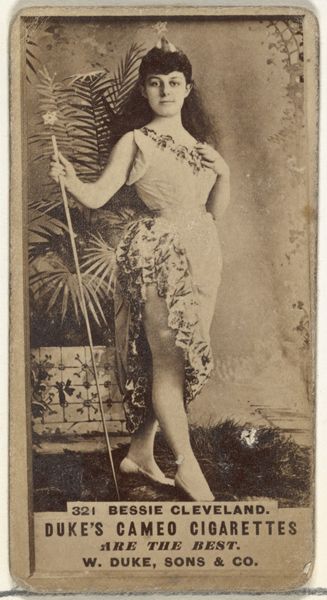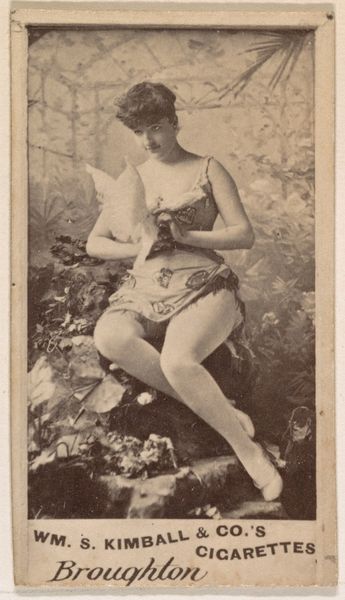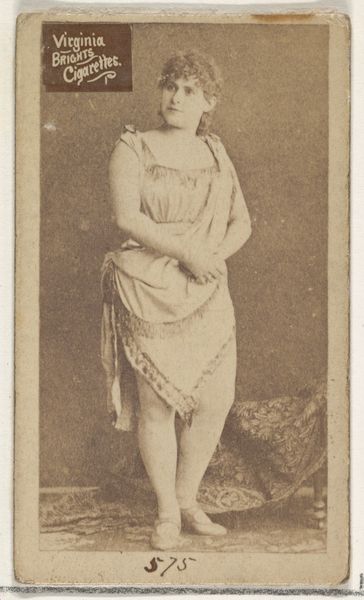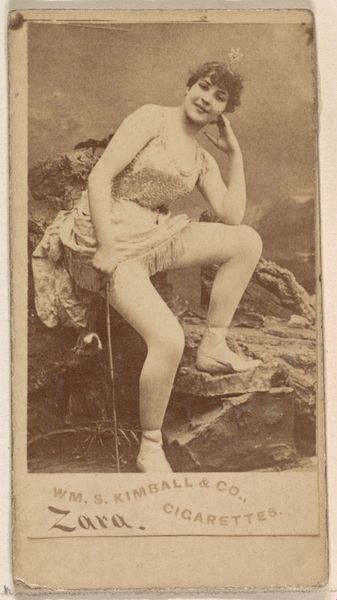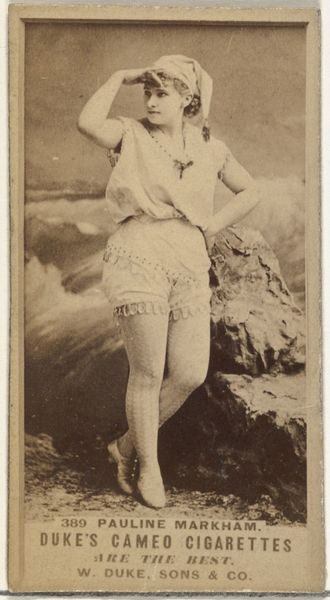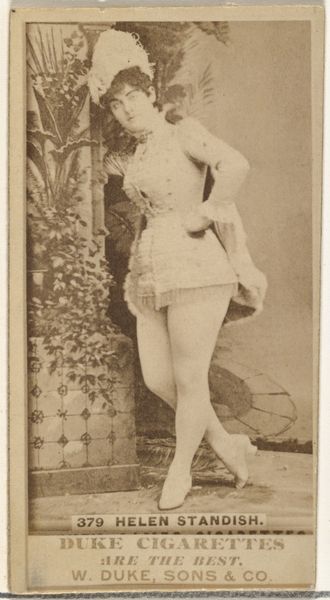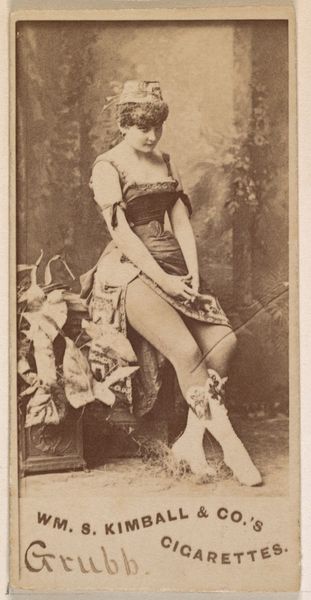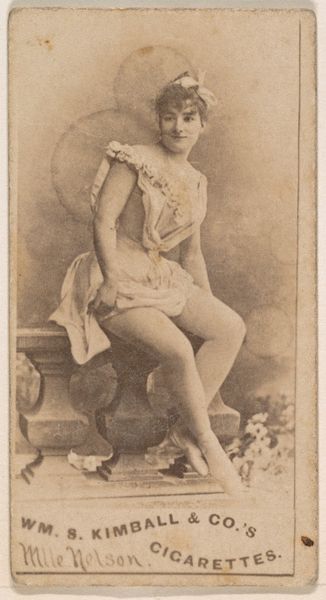
Card Number 154, Julia Verene, from the Actors and Actresses series (N145-5) issued by Duke Sons & Co. to promote Cameo Cigarettes 1880s
0:00
0:00
Dimensions: Sheet: 2 11/16 × 1 3/8 in. (6.8 × 3.5 cm)
Copyright: Public Domain
Curator: This is card number 154 from the "Actors and Actresses" series (N145-5) featuring Julia Verene, produced by Duke Sons & Co. in the 1880s to promote Cameo Cigarettes. Editor: It has this dreamlike quality to it, sepia-toned, reminiscent of old engravings—a staged naturalness that seems so distant now. It feels like a fabrication on multiple levels. Curator: Absolutely. These cards reveal much about the commodification of celebrity. This was mass-produced, a cheap card inserted into cigarette packs to build brand loyalty and showcase popular performers of the time. The materials reflect that accessible production. Editor: Tell me more about this performer's symbolism; why her? How does it work? Curator: Well, Julia Verene likely embodied beauty ideals. Flowers symbolize fleeting beauty and maybe also ideas of femininity constructed through popular media. The Ukiyo-e influence seems present, too, that aesthetic being trendy in Western art during that period. Editor: It’s ironic that a throwaway commercial item tries to achieve permanence via "artistic" conventions. It makes you think about the contrast of Verene's carefully constructed image, the rough paper stock of the card, and the very disposable nature of cigarettes. What was this actress known for anyway? What type of stage production? Curator: Details about Verene herself are scant now, much like the images she appeared in, scattered. What we know is interwoven into her persona created on stage. Yet, we remember these images from a past era of culture in a mediated encounter of consumerist society that speaks so strongly to a psychology of consumer behavior. The symbolism makes me reflect. Editor: I find that interesting. This little card speaks volumes, ironically, about larger trends and the labor, processes, materials, and manufactured desires that construct our culture. Curator: Agreed. It is a fragment holding an entire worldview that is so removed from our own now. Editor: Indeed. I see the production of desire and mass identity intertwined, captured on a fleeting object from a bygone era. Curator: Precisely. An entire world compacted into this rectangular advertisement that has endured longer than its creators.
Comments
No comments
Be the first to comment and join the conversation on the ultimate creative platform.
